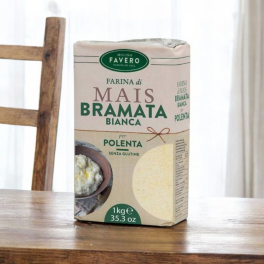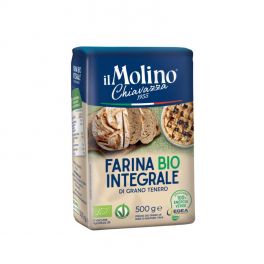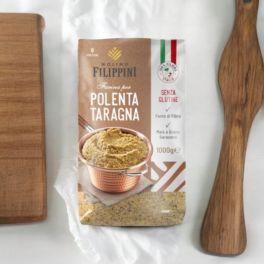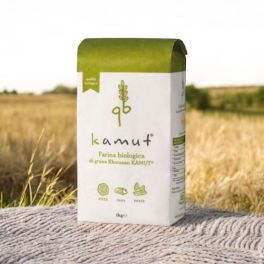Wholemeal flour for sale
Wholemeal flour online prices
L
Wholemeal flour represents the whole grinding of the cereal grain, preserving all its parts: the germ, the bran and the endosperm. Unlike refined flour, which undergoes a milling process that eliminates these nutritional components, wholemeal flour retains a rich and complete nutritional profile.
Why choose wholemeal flour?
The health benefits of consuming wholemeal flour are numerous and scientifically proven. Here are some of the main advantages:
Rich in fibre: Wholemeal flour is an excellent source of fibre, which plays a fundamental role in the regulation of digestion, in the control of blood sugar, in the sense of satiety and in the prevention of various pathologies, including constipation, cardiovascular diseases and some types of cancer.
High content of vitamins and minerals: Whole wheat flour retains all the vitamins and minerals present in the cereal grain, including B vitamins, iron, zinc, magnesium and potassium. These essential nutrients are crucial for the proper functioning of the body and for maintaining good health.
Low glycemic index: The glycemic index of wholemeal flour is significantly lower than that of refined flour. This means that the consumption of wholemeal flour does not cause sudden glycemic spikes, promoting a gradual release of energy and helping to prevent type 2 diabetes.
Better digestion: The fibers contained in wholemeal flour help regulate intestinal motility, promoting more efficient digestion and counteracting constipation and abdominal swelling.
Potential role in weight management: The prolonged feeling of satiety induced by the fibers of wholemeal flour can contribute to the control of body weight, promoting a balanced and sustainable diet.
Antioxidant properties: Wholemeal flour is rich in antioxidant compounds, such as polyphenols and ferulic acid, which fight free radicals and protect cells from oxidative damage, helping to prevent premature aging and some chronic-degenerative diseases.
Is wholemeal flour suitable for everyone?
Whole wheat flour is generally considered to be safe and suitable for most people. However, it is important to note that some individuals may have intolerances or sensitivities to gluten, a protein found in cereals such as wheat, barley and rye. In these cases, it is advisable to consult a doctor or nutritionist to identify the alternatives best suited to your dietary needs.
For those suffering from celiac disease, an autoimmune disease triggered by gluten consumption, wholemeal flour is not recommended. Fortunately, there are several gluten-free alternatives, such as rice flour, corn flour, buckwheat flour and quinoa flour, which can be used to prepare tasty and nutritious recipes.
In conclusion, wholemeal flour represents a healthy and beneficial food choice for most people. Thanks to its rich content of fiber, vitamins, minerals and antioxidants, wholemeal flour can help improve digestion, control weight, prevent various chronic diseases and promote general well-being. Wholemeal flour price: The price of wholemeal flour may vary depending on based on the type of cereal used, its origin and brand. In general, wholemeal flour costs slightly more than refined flour.
Types of wholemeal flour and their uses in cooking
In this chapter we will explore the different varieties of wholemeal flour available and discover their specific uses in the kitchen.
Variety of wholemeal flours: a world of flavors and nutrients
Wholemeal flour is not limited to a single type of product, but comes in different varieties, each with distinctive characteristics that make it suitable for specific culinary preparations. Here are some of the most popular wholemeal flours:
Wholemeal durum wheat flour: Ideal for the preparation of pasta, bread, pizza and savory baked goods. It has a high gluten content, which gives elasticity and toughness to the dough.
Wholemeal soft wheat flour: Perfect for cakes, biscuits, focaccias and leavened desserts. It has a medium gluten content, which makes it versatile and suitable for different preparations.
Whole spelled flour: Rich in proteins and fibre, it gives a rustic flavor and a toasted aroma to bread, pasta and desserts. It has a low gluten content, which makes it more digestible.
Wholemeal rye flour: Characterized by an intense and slightly bitter flavour, it is excellent for wholemeal bread, rustic cakes and breadsticks. It has a high fiber content and a low gluten content. [Image of Wholemeal rye flour]
Wholemeal kamut flour: An ancient cereal with a delicate flavor and a high content of proteins and mineral salts. Ideal for bread, pasta, biscuits and tarts. It has a low gluten content.
Smart substitutions with wholemeal flour: a touch of health in every recipe
Integrating wholemeal flour into your daily diet does not mean distorting traditional recipes. With a little ingenuity and a few simple substitutions, you can enjoy familiar dishes enriched with nutrients and fiber.
Replace 25% of white flour with wholemeal flour: A gradual first step towards a higher fiber diet. Perfect for bread, focaccia, cakes and biscuits.
Replace 50% of the white flour with wholemeal flour: For a more rustic flavor and a greater supply of nutrients. Suitable for pasta, pizza, breadsticks and tarts.
Use 100% wholemeal flour: For recipes dedicated entirely to wholemeal flour, such as wholemeal bread, wholemeal pasta and wholemeal biscuits.
Basic recipes modified with wholemeal flour:
Wholemeal bread: Replace white flour with wholemeal durum wheat or spelled flour to obtain a bread rich in flavor and nutrients.
Wholemeal cake: Use wholemeal soft wheat or kamut flour to prepare a soft and tasty cake with a touch of rusticity.
Wholemeal biscuits: A healthy and delicious alternative to classic biscuits, using wholemeal soft wheat or spelled flour.
Wholemeal pasta: The ideal choice for a first course rich in fiber and with an intense flavour, with wholemeal durum wheat flour.
2.3. Debunking the myths about wholemeal flour: taste and practicality for everyday cooking
Wholemeal flour is often associated with a "coarse" taste and difficulty in using it in the kitchen. In reality, these fears are unfounded and with a little experience it is possible to appreciate the versatility and taste of this precious food resource.
Guide to purchasing and storing wholemeal flour
In this chapter, we will focus on how to properly purchase and store whole wheat flour to preserve its freshness, quality and taste.
How to choose flour
Faced with the vast assortment of wholemeal flours available, it is important to make informed choices based on some fundamental criteria:
Origin: Favor flours coming from organic cultivation or sustainable agriculture to guarantee a product free of pesticides and harmful chemicals.
Brand: Opt for reliable and recognized brands, which guarantee the quality and traceability of the product.
Organic certifications: Look for the presence of organic certifications such as the "Euroleaf" or "ICEA" brand, which attest to compliance with organic production standards.
In addition to these factors, it is important to pay attention to the packaging of wholemeal flour:
Expiry date: Check the expiry date indicated on the package to ensure you are purchasing a fresh and not expired product.
Integrity of the package: Check that the package is intact and has no holes or damage that could compromise the conservation of the flour.
Store wholemeal flour properly
To preserve the freshness and nutritional properties of wholemeal flour, it is essential to store it properly:
Airtight containers: Transfer whole-wheat flour from its original bag to airtight food-grade glass or plastic containers. This will help prevent insect infestation and moisture absorption.
Cool, dark pantry: Store containers of wholemeal flour in a cool, dry, dark pantry, away from heat and direct light.
Expected shelf life: Properly stored whole wheat flour can maintain its freshness for approximately 6-12 months. However, it is advisable to consume the flour within 3-4 months of opening for optimal flavor.
Tips for bulk purchasing and stone grinding (optional)
For an even more authentic and healthy experience, you can opt to purchase bulk stone-ground wholemeal flour.
Advantages of stone grinding: Stone grinding preserves the germ and bran of the cereal, preserving the nutritional properties and giving the flour a more rustic and intense flavour.
Where to find stores that offer stone-ground wholemeal flours: Organic food stores, health food stores, and local stone mills often offer stone-ground wholemeal flours.
In conclusion, the correct purchase and storage of wholemeal flour is essential to guarantee a fresh, nutritious and excellent tasting product. Choosing flours from organic cultivations, storing them in airtight containers in a cool, dark place and, if possible, opting for stone grinding, will allow you to fully benefit from the advantages of this precious food.
Wholemeal flour price: The price of wholemeal flour can vary based on the type of cereal used, its origin, brand and milling method. In general, whole wheat flour costs slightly more than refined flour, but its nutritional value and health benefits make it a valuable investment in your well-being.
Wholemeal flour for sale online: Wholemeal flour is easily available online on e-commerce websites specializing in organic and healthy food products. Online purchasing offers the convenience of receiving flour directly to your home, often with the possibility of choosing between different varieties and brands.
Wholemeal Flour Frequently Asked Questions (FAQ)
In this chapter, we will answer the most common questions asked by consumers about wholemeal flour to clarify doubts and dispel false myths.
Does wholemeal flour taste better than white flour?
The taste of wholemeal flour is often described as more rustic, intense and slightly nutty compared to white flour, which has a more neutral and delicate flavour. Preference is subjective and depends on personal taste. However, many appreciate the distinctive taste of wholemeal flour, which adds an extra flavor to recipes.
Does wholemeal flour make desserts rise well?
Yes, wholemeal flour can be used to make leavened desserts, such as cakes, biscuits and muffins. However, it is important to take into account some characteristics:
Leavening power: Wholemeal flour has a slightly lower gluten content than white flour, which can affect leavening. To compensate, you can slightly increase the amount of yeast in recipes or use a specific yeast for wholemeal flours.
Liquid absorption: Wholemeal flour absorbs more liquid than white flour. It is therefore advisable to gradually add liquids during the kneading, adjusting the consistency based on the type of flour used.
Final result: Cakes made with wholemeal flour will have a slightly denser consistency and a darker color than those made with white flour.
Can I completely replace white flour with wholemeal flour in recipes?
In general, it is possible to replace white flour with wholemeal flour in a percentage varying from 25% to 100%, depending on the type of recipe and your tastes.
Partial replacement (25-50%): A good place to start using wholemeal flour is to replace 25% or 50% of your white flour with wholemeal flour. This allows you to get used to the taste and consistency of wholemeal flour without excessively distorting the recipes.
Total replacement (100%): For a more rustic and fibre-rich flavour, you can completely replace white flour with wholemeal flour. In this case, it is important to adapt the recipes and cooking times, as indicated in some specific recipes for wholemeal flour.
Is wholemeal flour rich in gluten?
Yes, wholemeal flour contains gluten, although in slightly less quantity than white flour. The gluten content varies depending on the type of cereal used:
Durum wheat: It has a high gluten content, similar to white durum wheat flour.
Soft wheat: It has a medium gluten content, suitable for the preparation of bread, cakes and biscuits.
Spelled: Has a low gluten content, making it more digestible for those with a gluten sensitivity.
Rye: Has a high gluten content, similar to durum wheat.
Kamut: Has a medium gluten content, similar to soft wheat.
Are there alternatives to gluten-free wholemeal flour?
For those suffering from celiac disease or gluten intolerance, there are several alternatives to wholemeal flour:
Rice flour: It has a neutral flavor and a light consistency, suitable for cakes, biscuits and bread.
Corn flour: It has a characteristic flavor and a slightly grainy consistency, excellent for polenta, tortillas and breadsticks.
Buckwheat flour: It has a strong flavor and a consistency similar to wheat flour, ideal for pasta, bread and crepes.
Almond flour: It has a rich flavor and a fine texture, perfect for desserts and biscuits.
Coconut flour: It has an exotic flavor and a soft texture, excellent for desserts and smoothies.
These gluten-free flours can be used alone or in combination to create tasty doughs and preparations suited to the needs of those who cannot consume gluten.
In conclusion, wholemeal flour represents an excellent choice for those who want a healthier, fiber-rich diet. Its characteristic taste, its versatility in the kitchen and the numerous health benefits make it a precious ingredient for nutritious and tasty dishes.
Incorporating wholemeal flour into your daily diet has numerous benefits for health and well-being:
Rich in fibre: Wholemeal flour is an excellent source of fibre, which aids digestion, regulates the intestine, increases the feeling of satiety and can help reduce the risk of chronic diseases such as diabetes, heart disease and some types of cancer.
Greater supply of nutrients: Compared to refined flour, wholemeal flour retains most of the nutrients naturally present in the cereal grain, including group B vitamins, iron, zinc and magnesium, essential for the correct functioning of the body.
Lower glycemic index: Whole wheat flour has a lower glycemic index than white flour, meaning it releases sugar into the blood more slowly, helping to maintain stable blood sugar levels and preventing insulin spikes.
Potential role in weight management: The high fiber content and greater satiating power of wholemeal flour can promote body weight control, helping to reduce calorie intake and promoting a longer-lasting sense of fullness.
Wholemeal flour: a precious ally in the kitchen for creative and tasty recipes
Wholemeal flour is not limited to being a healthy alternative to white flour, but represents a versatile and precious ingredient for experimenting in the kitchen and creating tasty and nutritious dishes:
Classic recipes: Bread, pasta, pizza, cakes, biscuits and breadsticks can be successfully prepared using wholemeal flour, achieving a more rustic and rich flavour, with a slightly different texture than versions with white flour.
Creative recipes: Wholemeal flour is perfect for creating new recipes, such as veggie burgers, meatballs, flans, pancakes and muffins, adding a touch of health and flavor to original dishes.
Combinations with other ingredients: Wholemeal flour can be combined with different flours, such as spelled, rye or kamut flour, to obtain doughs with unique characteristics and always new flavours.
Tips for integrating wholemeal flour into your daily diet
Starting to use wholemeal flour in your diet does not require radical changes. Here are some tips for a gradual and tasty integration:
Partial substitutions: Start by replacing 25% or 50% of the white flour with whole wheat flour in family recipes. This allows you to get used to the taste and consistency of wholemeal flour without excessively distorting the flavors.
Gradual experimentation: Try to prepare a new recipe with wholemeal flour every week, exploring different types of flours and recipes to discover new combinations and flavours.
Reading labels: Pay attention to the labels of packaged products and choose those that contain wholemeal flour as the main ingredient.
Recipes dedicated to wholemeal flour: There are numerous cookbooks and websites dedicated to recipes with wholemeal flour, which offer a vast array of recipes



 Italiano (IT)
Italiano (IT)  Deutsch (DE)
Deutsch (DE)  Français (FR)
Français (FR)  Español (ES)
Español (ES)  Polish (PL)
Polish (PL) 



This website is protected by reCAPTCHA and the Privacy Policy & Terms and Conditions of Google